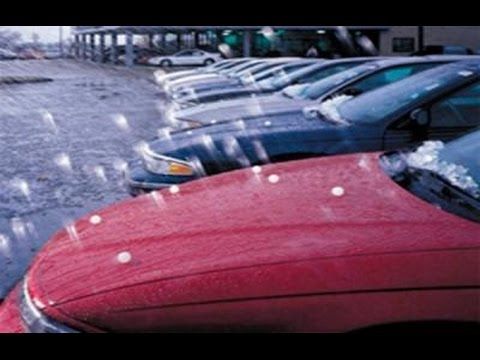Repair instructions
Car Hail Damage Repair: Auto Shop or DIY?
Overview
If your vehicle has suffered from hail damage, you have several options for repair. You can choose to hire professionals, use repair kits, or attempt DIY solutions. However, we strongly advise entrusting this work to experienced professionals. They adhere to manufacturer repair guidelines and can assist you in filing insurance claims for hail damage. Keep in mind, the entire process might take a week or more.
If you have comprehensive auto insurance, you are covered for hail damage.
To identify hail damage, examine the shadows cast by the dents in shaded areas or use a dent reflector board for a clearer view.

Repair Options for Hail Damage
When it comes to repairing hail damage, you have a variety of choices:
Professional Services
We recommend opting for professional services to ensure your vehicle is restored correctly. Certified auto repair shops follow strict manufacturer guidelines, ensuring the job is done right. They can also facilitate the insurance process by providing a thorough inspection and a detailed repair estimate for submission to your insurer. Just be sure to choose a reputable shop to avoid subpar repairs that could compromise your vehicle’s integrity.
Dent Repair Kits
If you prefer not to visit an auto shop, dent repair kits are an option for minor dents. A dent puller can work well on smaller indentations, but larger dents may require professional evaluation to assess any underlying damage to the body or frame.
These kits often include pushing tools designed to reach inside body panels and pop out dents. However, this method can be time-consuming and requires a delicate touch—applying too much pressure might worsen the damage.
Windshield Repair Kits
For hail damage to your windshield, consider using a windshield repair kit. These kits employ resin to fill cracks and prevent further spreading. It’s crucial to act quickly after the hailstorm, but remember, they won’t be effective for shattered or severely cracked windshields.
DIY Home Repair Techniques
While there are numerous DIY methods suggested online, we advise caution. Some methods, like using a heat gun and dry ice, aim to exploit the metal’s thermal properties to pop out dents. However, the risk of damaging your vehicle’s paint is high, and the results can be less than desirable. We do not recommend this approach.
Insurance Coverage for Hail Damage
If you have comprehensive insurance, you are covered for hail storm damage. This type of coverage addresses non-collision damages, including those from storms. Be aware, though, that you may still have to pay a deductible, and frequent claims could lead to higher premiums. If you only have liability insurance, which is the minimum required by most states, it will not cover hail damage.
Repair Timeline
The duration for hail damage repairs varies based on the severity of the damage, your insurance company’s response time, and the efficiency of the repair shop. Typically, the initial estimate process can take 1 to 24 hours. Following that, expect an additional three to five business days for your insurer to approve the estimate. Actual repairs may take one to four days, depending on the extent of the damage.
If you opt for DIY repairs, you might save time on the insurance front, but you’ll likely invest more time in the repair work itself.
Identifying Hail Damage
Detecting hail damage can be challenging, but there are effective methods to do so. Check for shadows cast by dents in shaded areas—this technique can make the dents more visible. Additionally, dent reflector boards, available for purchase or printable online, can help you see the distortions in the vehicle’s surface clearly.
Ultimately, if your vehicle’s body remains intact and the dents don’t compromise its structural integrity, you might choose to leave them. However, for the best results and peace of mind, we recommend letting the professionals handle the repairs—especially if you have insurance to cover the costs.
